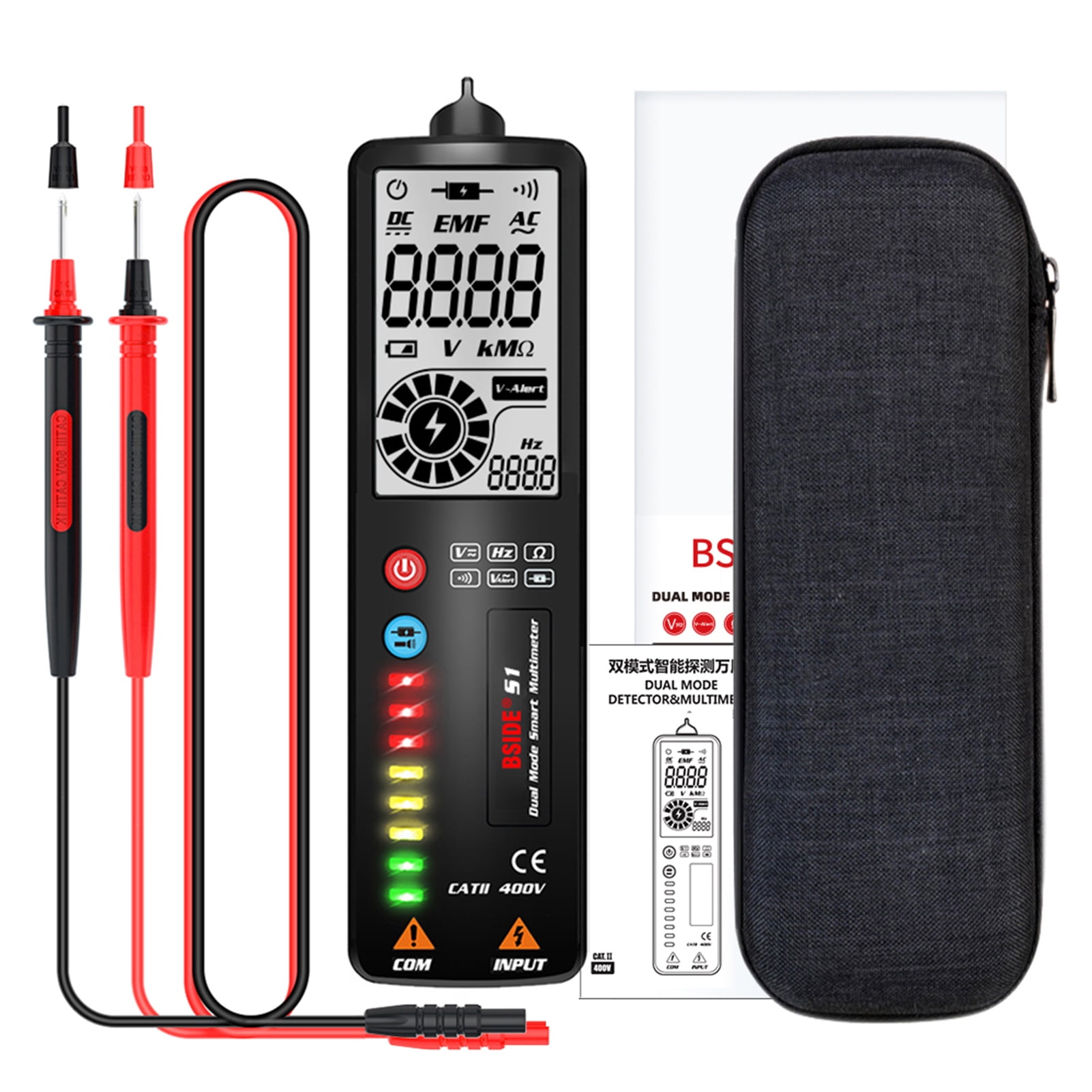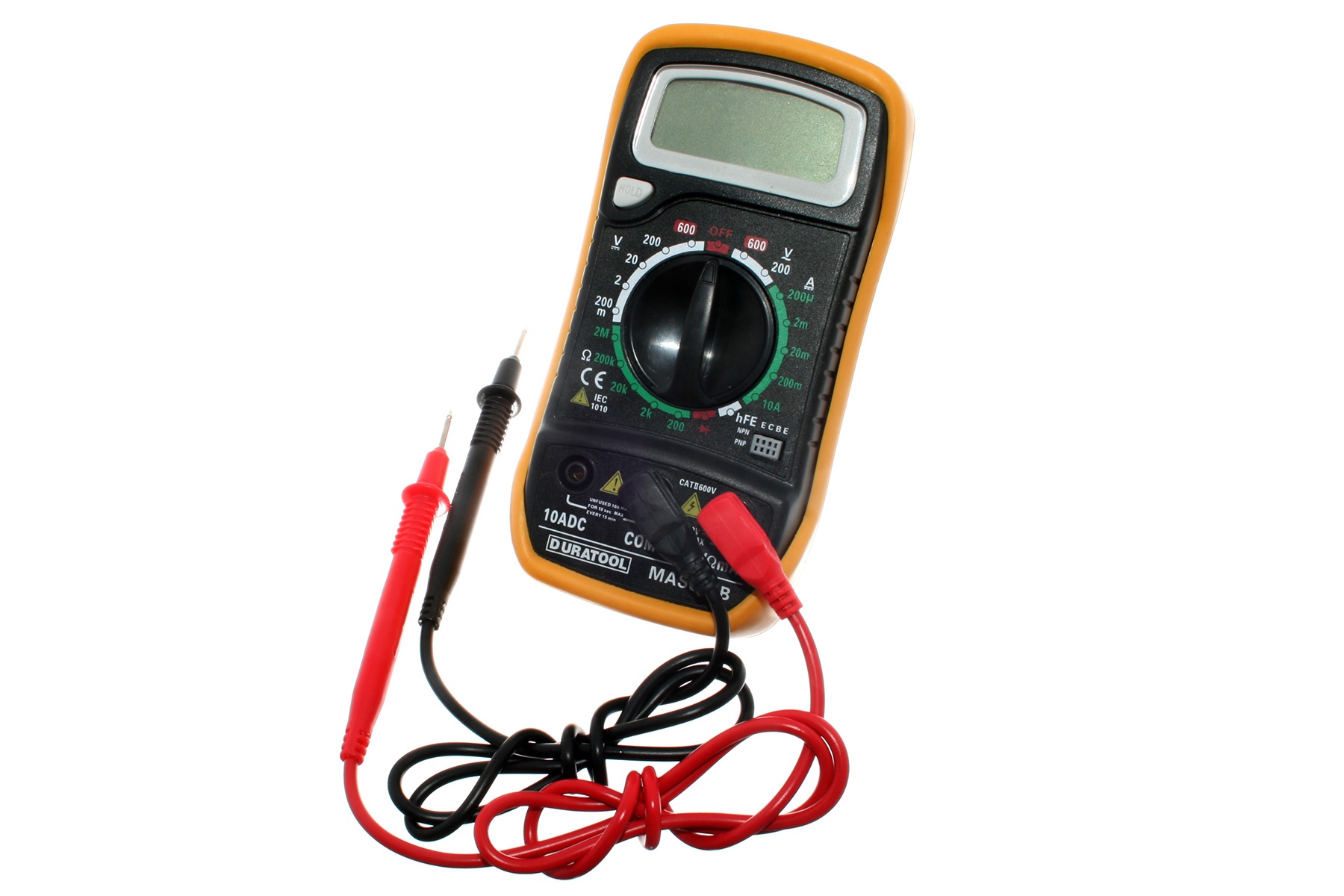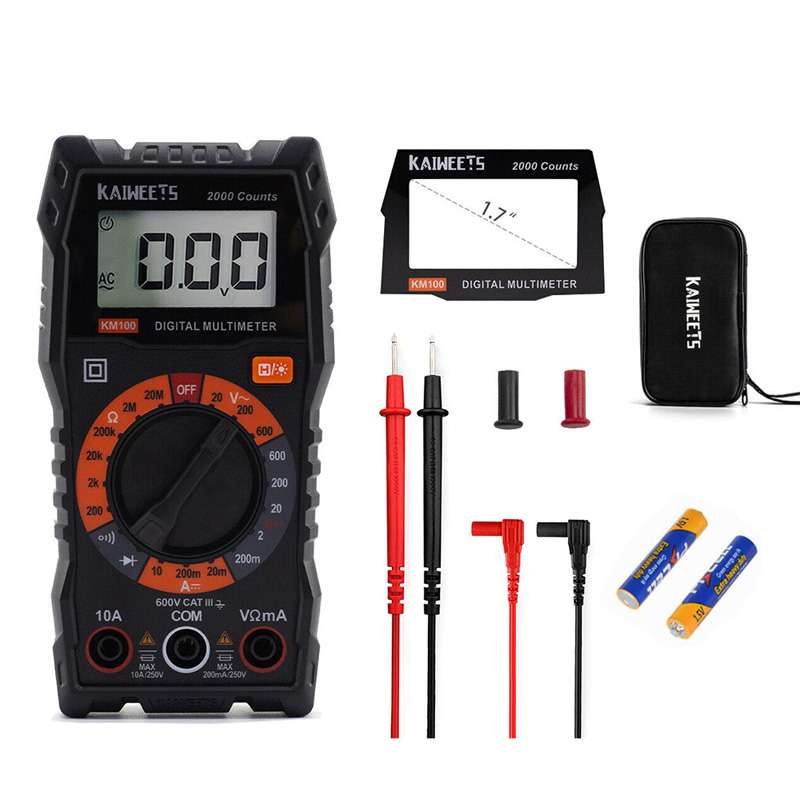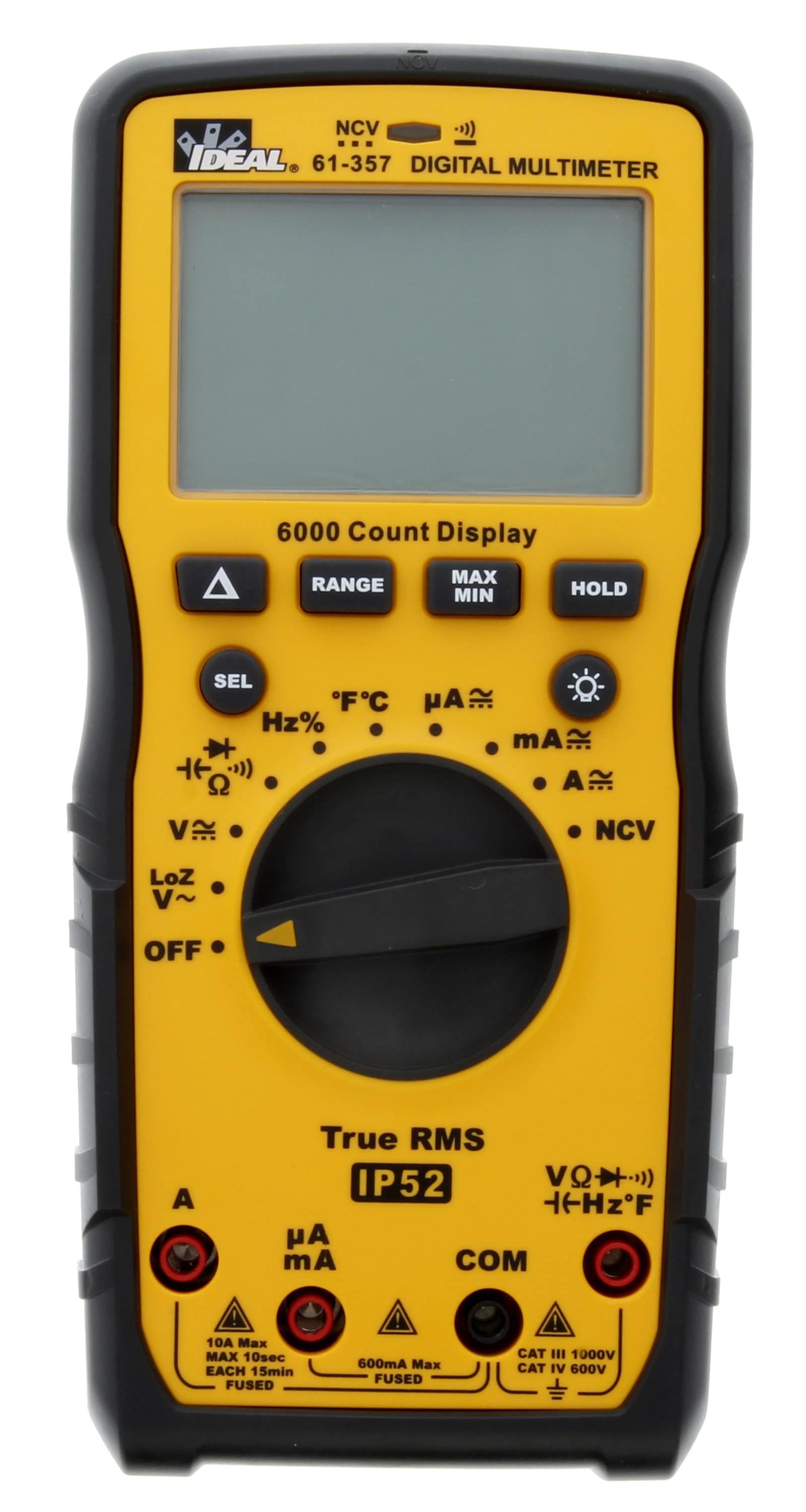Brilliant Tips About What Is 2000m In Multimeters

Decoding 2000m on Your Multimeter
1. Understanding Measurement Ranges
Ever looked at your multimeter and seen "2000m" staring back at you? Don't worry, it's not an invitation to participate in an impromptu 2-kilometer race. What it does mean is a range setting, specifically for measuring milliamps (mA), which are thousandths of an amp. Think of an amp as the volume of electrical current flowing, and a milliamp as a tiny trickle. So, 2000m on your multimeter means it can measure current up to 2000 milliamps, or 2 amps.
Multimeters often have different ranges for measuring current, voltage, and resistance. These ranges ensure accurate readings. If you're trying to measure a current that's significantly higher than the range you've selected, you could overload the meter and potentially damage it. Nobody wants that! It's always a good idea to start with the highest range and then work your way down to get the most precise reading without risking your multimeter's well-being.
Think of it like using a measuring cup. You wouldn't use a teaspoon to measure a gallon of water, right? You'd need a much larger container. Similarly, you need to select the appropriate range on your multimeter to accurately measure the electrical current you're working with. Selecting "2000m" is perfect for smaller currents, but if you suspect a larger current, opt for a higher amp range if your multimeter has one.
Failing to choose the correct range can lead to inaccurate measurements, or even worse, it can damage your multimeter. Always double-check your settings before you start probing around. Safety first, always! Understanding your multimeter's range settings is a fundamental skill for anyone working with electronics, from hobbyists to professionals.

Milliamps
2. Real-World Applications of Milliamp Measurements
So, when would you actually use that 2000m setting? Milliamps are commonly encountered in low-power circuits, such as those found in electronic gadgets, sensors, and various control circuits. If you're troubleshooting a circuit that's not behaving as expected, measuring the current in milliamps can help you pinpoint the problem. Perhaps a component is drawing too much or too little current, indicating a fault.
Imagine you're working on a small LED project. LEDs typically operate at relatively low currents, often in the milliamp range. Using the 2000m setting on your multimeter allows you to accurately measure the current flowing through the LED and ensure it's within its specified operating parameters. This prevents you from accidentally burning out the LED with excessive current.
Another common application is checking the idle current draw of a car battery. While starting the engine requires a significant amount of current (measured in amps), a car battery also has a small, continuous current draw when the car is off, powering things like the clock and alarm system. An excessively high idle current draw can drain the battery overnight. Measuring this idle current, often in the milliamp range, can help you diagnose battery or electrical system issues.
Beyond just repairs, understanding milliamp measurements can be crucial in design. When building a new electronic device, knowing the milliamp draw of each component allows for better power supply selection and battery life optimization. Properly calculating current consumption in the design phase helps ensure your creation is reliable and energy-efficient. Essentially, working in milliamps is about precision and understanding the subtle power needs of small electronics.

Connecting Your Multimeter for Milliamp Measurements
3. Setting Up Your Multimeter Correctly
Alright, now you know what 2000m means and why milliamps are important. But how do you actually measure current with your multimeter? It's crucial to set it up correctly to avoid damage or incorrect readings. First, make sure your multimeter is switched off. Then, locate the current input jack, usually labeled "mA" or "A" (for amps), and plug your red test lead into it. If your multimeter has multiple current input jacks, choose the one with the appropriate range (in this case, the one designated for milliamps). The black test lead goes into the "COM" (common) jack.
Next, select the "2000m" range on your multimeter's selector switch. If your multimeter doesn't have a specific "2000m" setting, choose the next highest range available. For example, if it has a "200m" and a "10A" setting, and you suspect the current is between 200mA and 2000mA, you'd select the "10A" range initially. You can then potentially switch to a more sensitive range (if present and safe) after the initial reading. Remember, starting with a higher range and working down is always the safest approach.
Here's the critical part: to measure current, you need to connect your multimeter in series with the circuit you're measuring. This means you need to break the circuit and insert the multimeter in the path of the current flow. Think of it like placing a flow meter in a water pipe — you need to cut the pipe and insert the meter to measure the water flow. Do not connect the multimeter across a component like you would when measuring voltage, as this will create a short circuit and could damage your multimeter or the circuit you're testing!
Once everything is connected correctly, turn on the multimeter and read the display. The reading will indicate the current flowing through the circuit in milliamps. If the reading is very small, you can try switching to a lower range (if available and safe) for a more precise measurement. Remember to turn off the multimeter and disconnect it from the circuit once you're finished. Double-check everything before applying power to the circuit again to ensure everything is properly reconnected.

Everything About Multimeters A Complete Guide
Safety First
4. Protecting Yourself and Your Multimeter
Measuring current, especially with milliamps, requires a cautious approach. The biggest mistake you can make is connecting your multimeter in parallel (across) a component when set to measure current. As mentioned earlier, this creates a direct short circuit, potentially blowing a fuse inside your multimeter or even damaging the circuit under test. It's like trying to jump-start a car backward — not a good idea!
Always double-check your connections and the multimeter's settings before applying power to the circuit. Ensure the test leads are firmly plugged into the correct jacks, and the range selector is set appropriately. If you're unsure about the circuit's current draw, start with the highest current range on your multimeter and then decrease it until you get a readable measurement. Better safe than sorry!
Another common mistake is exceeding the multimeter's current rating. Most multimeters have a maximum current rating for each range. Exceeding this rating can damage the meter or even pose a safety hazard. Check your multimeter's user manual for its current ratings and adhere to them strictly. If you suspect the current might be higher than your multimeter's maximum rating, use a clamp meter instead, which can measure current without breaking the circuit.
Finally, be aware of the potential for electric shock. Even low-voltage circuits can be dangerous, especially if you have wet hands or are working in a damp environment. Wear appropriate safety gear, such as insulated gloves, and work in a well-lit and dry area. If you're not comfortable working with electricity, seek the help of a qualified electrician. Remember, safety is paramount, and no measurement is worth risking your health or well-being.

Beyond 2000m
5. Expanding Your Electrical Troubleshooting Toolkit
While understanding the 2000m setting is important, it's just one small piece of the multimeter puzzle. Multimeters are incredibly versatile tools with a wide range of functions, including measuring voltage (both AC and DC), resistance, continuity, capacitance, and even temperature. Each of these functions has its own set of settings and techniques, and mastering them will significantly enhance your ability to troubleshoot electrical problems.
For instance, measuring voltage is crucial for determining whether a circuit is receiving the correct power supply. Resistance measurements can help you identify faulty resistors or short circuits. Continuity testing allows you to check the integrity of wires and connections. And capacitance measurements are useful for diagnosing capacitor issues. Learning how to use each of these functions effectively is like adding new tools to your electrical troubleshooting toolkit.
Many modern multimeters also come with advanced features, such as auto-ranging, which automatically selects the appropriate range for the measurement, and data logging, which allows you to record measurements over time. These features can be incredibly helpful for diagnosing intermittent problems or monitoring circuit behavior. Take the time to explore your multimeter's user manual and familiarize yourself with all of its capabilities.
Becoming proficient with a multimeter takes practice and patience. Don't be afraid to experiment with different settings and functions, but always do so safely and responsibly. There are numerous online resources, tutorials, and courses available to help you learn more about multimeters and electrical troubleshooting. The more you practice, the more confident and skilled you'll become in diagnosing and repairing electrical problems. And who knows, you might even develop a newfound appreciation for the magic of electricity!

Multimeter Ac
FAQ
6. Frequently Asked Questions
Q: What happens if I accidentally connect my multimeter in parallel while set to measure current?A: Connecting your multimeter in parallel (across a component) while set to measure current creates a short circuit. This will likely blow the fuse inside your multimeter, and could potentially damage the circuit you're testing.
Q: My multimeter doesn't have a specific "2000m" setting. What range should I use?A: Choose the next highest range available. For example, if it has a "200m" and a "10A" setting, and you suspect the current is between 200mA and 2000mA, you'd select the "10A" range initially. You can potentially switch to a more sensitive range (if present and safe) after the initial reading.
Q: Can I measure AC current with the 2000m setting?A: It depends on your multimeter. Some multimeters have separate settings for measuring AC and DC current. Check your multimeter's manual to ensure you're using the correct setting for the type of current you're measuring. If your multimeter does not specify AC it's safer to assume it's DC only.